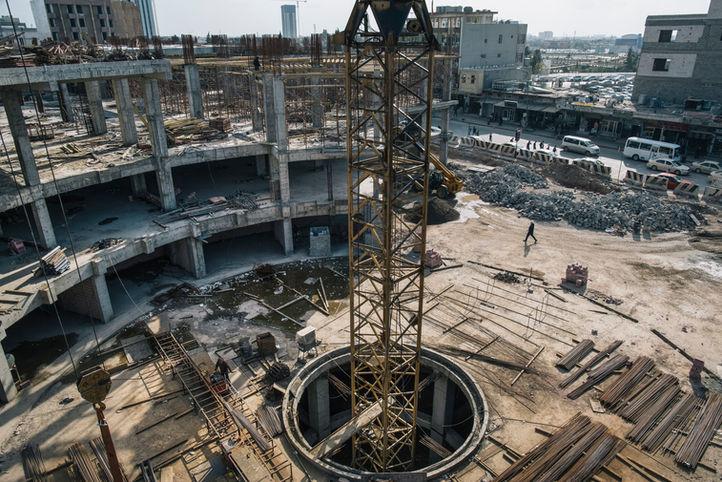Building Erbil explores recent architectural developments and daily life in Erbil ('Hawler' in Kurdish ) the capital of Iraqi Kurdistan.
Largely due to a no-fly-zone established by the West in 1991, and furthermore after the ‘liberation’ of Iraq in 2003, Erbil has experienced rapid and dramatic urban development.
With ancient cultural customs and a long complex history, Erbil is a mix of past and present. As one of the oldest continuously inhabited cities in the world, Erbil's traditional characteristics paradoxically fuse with it's contemporary status as a resource rich and geopolitically significant location.
From the construction site of Nishtiman Bazaar, one of the largest ongoing developments in the Middle East, to a gunsmith’s studio at the base of Erbil’s 6000 year old citadel, I present a range of visuals depicting the city's infrastructure, current constructions and daily commerce.
The development of modern buildings continues despite weariness of investors, many of who have ceased funding of various projects in the city over insecurity caused by the ongoing battle with Islamic State militants, who occupied the neighboring city of Mosul an hours drive away.
Erbil is the home to the Peshmerga, a vetted military force that is in charge of protecting Iraq’s Kurdish Federal Region. Although Peshmerga hold a visible presence in the city, security remains of concern, as there have been multiple attacks by militants on Erbil over recent years.
Nonetheless, buildings continue to rise and gated communities grow as Iraq’s natural resources, oil, gas and agricultural potential continues to attract foreign investment. With this comes architectural constructions built for the protection, faith and leisure of those who inhabit the city.

























